
In total 3100 pieces have been printed of the Bulgarian non-perforated block "Adventurous Motorcycles" from 2016. Relatively seen this is not really a large number. The block is only issued non-perforated. The 2 promotion blocks (value imprint 0,00), printed in turquoise and gray, have a much larger edition. During the presentation of the series a limited number of the promo-blocks on UV-paper, a bit thicker than the normal post office blocks, has been distributed.
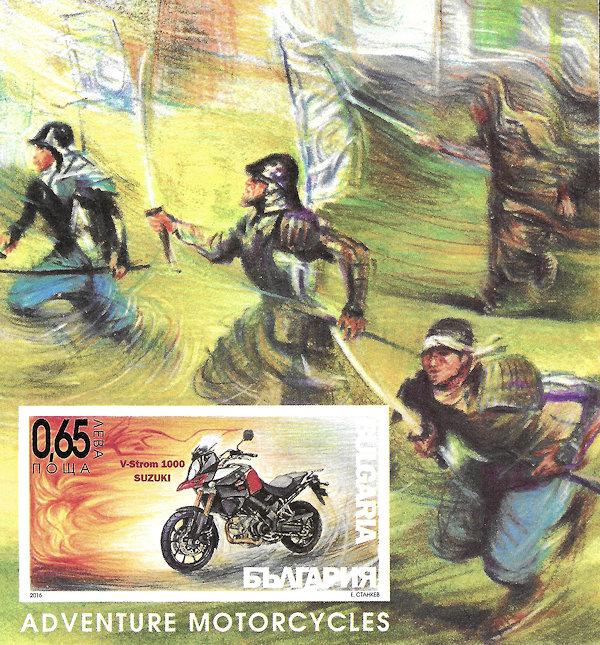
The normal block
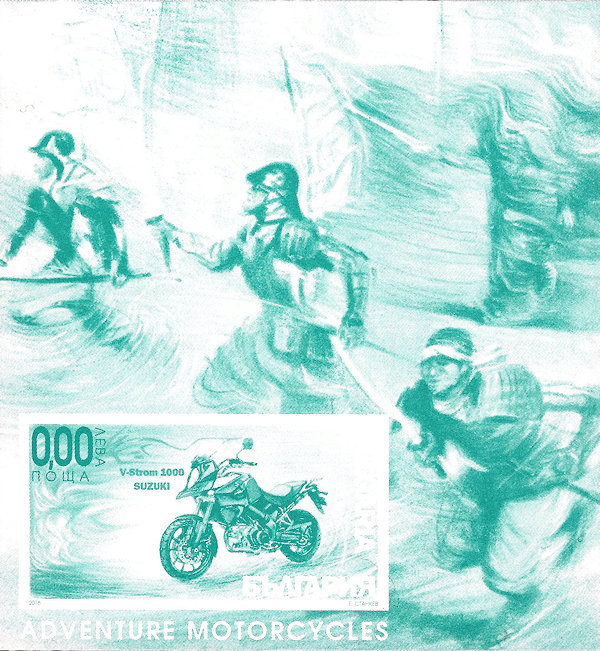
Promotion block in turquoise
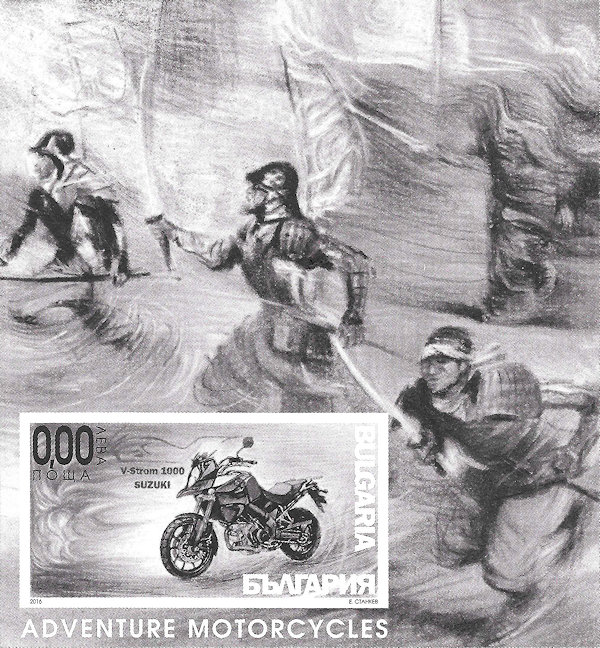
Promotion block in grey
Also one of the loose stamps belonging to the series has been issued as promotion stamp. This stamp shows the image of the 2 euro stamp: the Honda VFR800X Crossrunner. The paper is thicker and the value imprint shows 000.
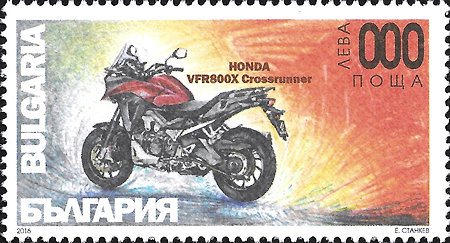
The promo-stamp and -blocks are given for free to people present at fairs and in the post offices. Together with the series of stamps and the block a piece of postal stationery has been issued, an envelop with the value 65 €-cent.
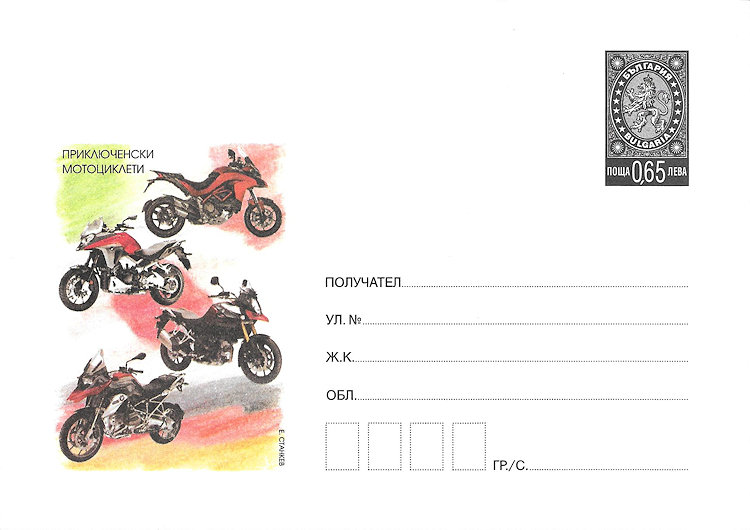
In the Hungarian sheet "150 years Postal Services", in the former newsletter announced as novelty, there are 2 stamps that are interesting for us. On the middle stamp of the top row is the Csonka 3-wheeler, which we also see on the stamp from 1997 and on the FDC's with the stamps from 2014.
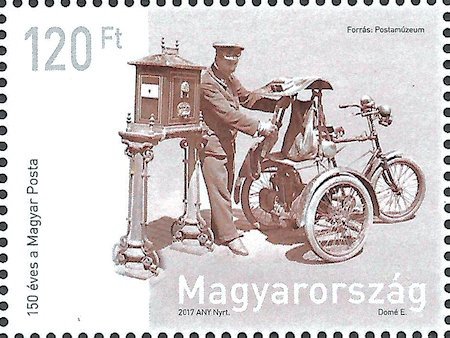
The stamp with the Csonka 3-wheeler
János Csonka (1852-1939) was an inventor who got acquainted with the technique of the gas engine from the Lenoir engine in France. After he had greatly improved the carburettor together with Dónat Bánki he became a teacher at the Budapest University for applied techniques, where he dedicated himself to the internal combustion engine and constructed the first Hungarian motorcycle and car. When the Post held a contest to achieve a reliable and useful vehicle for the Postal Services he won it, amongst others by applying the carburettor, and with this he designed the first Hungarian Post tricycle with internal combustion engine. This made the Hungarian post to the first Postal Service in the world using motorized transport. In 1900 the Post already had 21 Csonka 3-wheelers in use. This motorcycle has been used by the post from 1900 to 1925.
After his retirement in 1929 he started a factory in motorcycle parts, later
called Kismotor és Gepgyár, that delivered many parts to car- and motorcycle manufacturers.
On the stamp image we see a post employee emptying a post-box. Also the post-box is something special, because it also houses a stamp vending machine. And have a look to the special awning (small roof) made to keep the post bag dry.
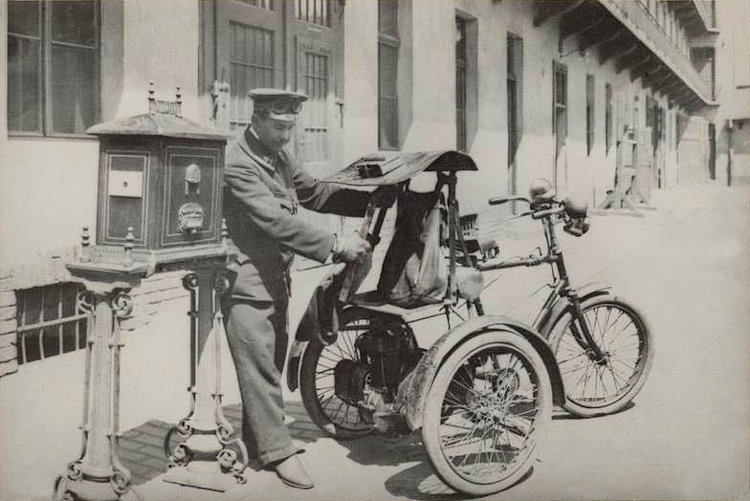
The original picture showing the stamp vending machine
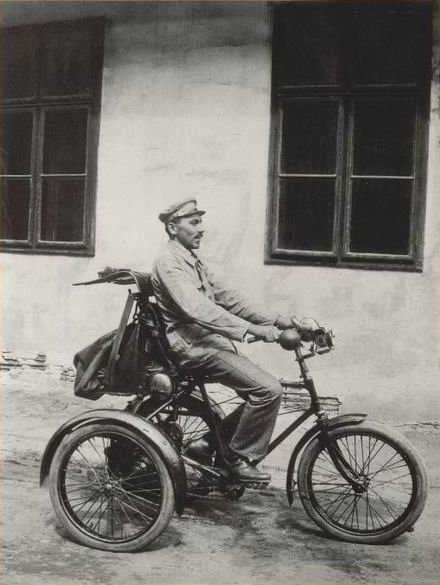
Postman on the Csonka with the awning clearly visible above the post bag
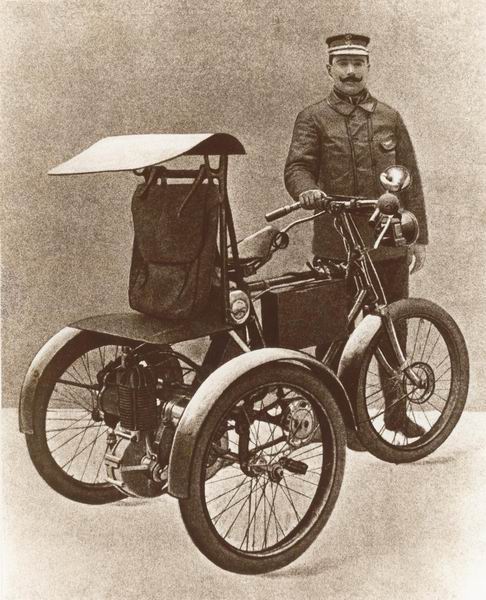
The Hungarian post also used Peugeot 3-wheelers
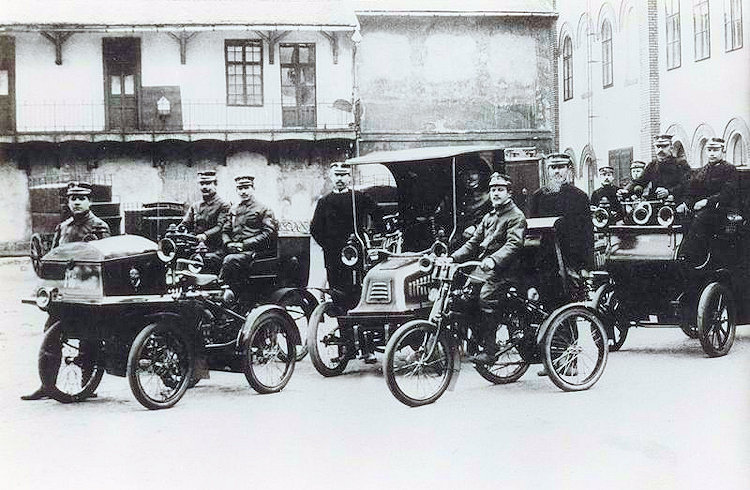
An overview of various motorized vehicled of the Hungarian post
On the stamp on the lower left side is the second motorcycle image. The designer (Eszter Domé) used on the background a post railway carriage from the 30-ies as has been used until far after 1945. The motorcycle is a Danuvia from the 60-ies, used for delivery of telegrams. It is a 125 cc model from 1960, the Danuvia DV with extra accesories like leg shields and an extra large mud-flap on the front mudguard, which is better visible on the original picture.
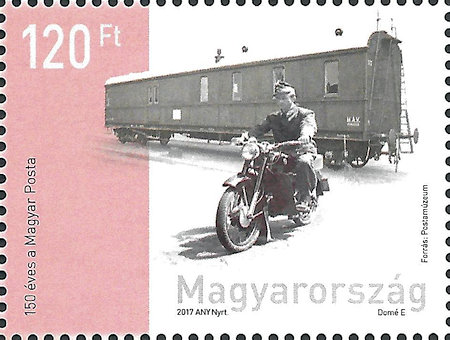

The original picture
Of the sheets 60.000 have been printed in total.
The bicycles are of the make Csepel, that also built a lot of motorcycles. The cars are a Barkas bus and a Nissan ENV 200 electric van.
MV Agusta! We motorcyclists know the name off course from the very beautiful motorcycles, but the name got famous with... airplanes, and especially helicopters. Count Giovanni Agusta already in 1923 started the company C.A. Agusta in the aeronautics industry. In 1927 Giovanni died and the counts son, Count Domenico Agusta, took over the helm under the name MV Agusta. After the AXIS powers, which Italy had joined, lost the second World War, these countries were not allowed anymore to produce war material like planes. Compelled by necessity they switched to motorcycles. MV Agusta, in full: Meccania Verghera Agusta S.p.A., started with the production of a light machine, the Vespa 98cc, but the name Vespa was already registered (by Piaggio) and the name became in short MV 98. Here the sports version.
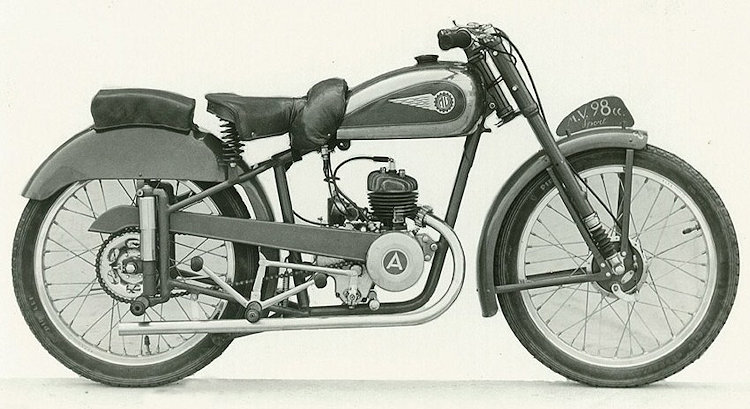
Over the years MV Agusta, especially with Giacomo Agostini, earned 38 world championships in road racing.
In 1977 the production of motorcycles was terminated. This was because the company wanted to pay its full attention to the production of helicopters. The name MV Agusta was bought by Cagiva, the racing department by the American Team Obsolete. It lasted until 1997 before Cagiva introduced again a model series under the name MV Agusta: the F4 series. In 2008 Cagiva came in the hands of Harley-Davidson and less than a year later the brand names Cagiva, MV Agusta and Buell were sold by HD to the Castiglioni family for the huge sum of.... 3 dollar.
But okay: in 2017 a party could be held for the 90 year old, and this was celebrated with, amongst others, a set of postcards and a special postmark. The numbered set counts 4 cards with memmorative moments from the Agusta
history and has an edition of 500 sets.
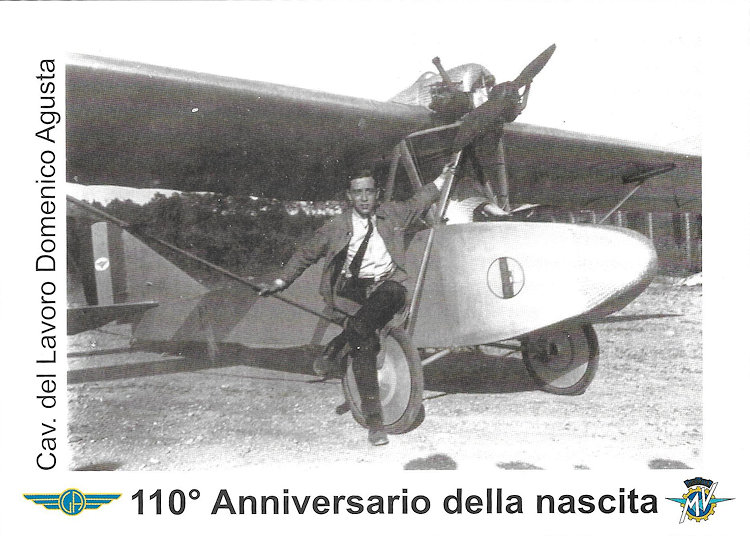
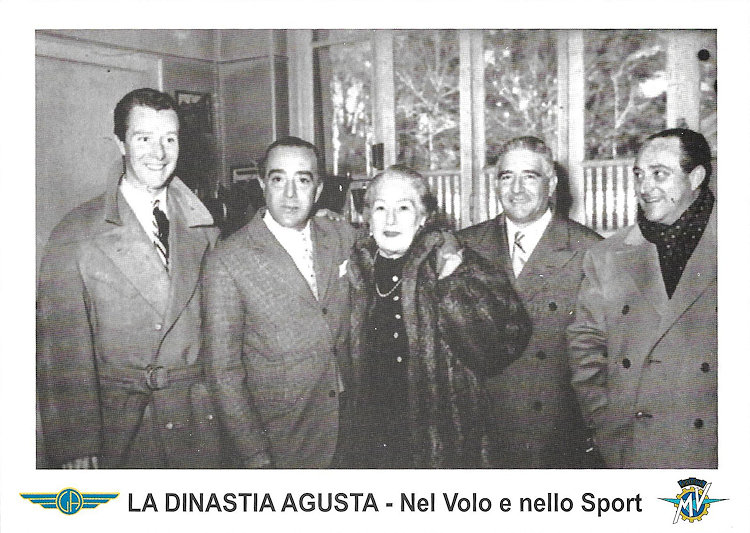
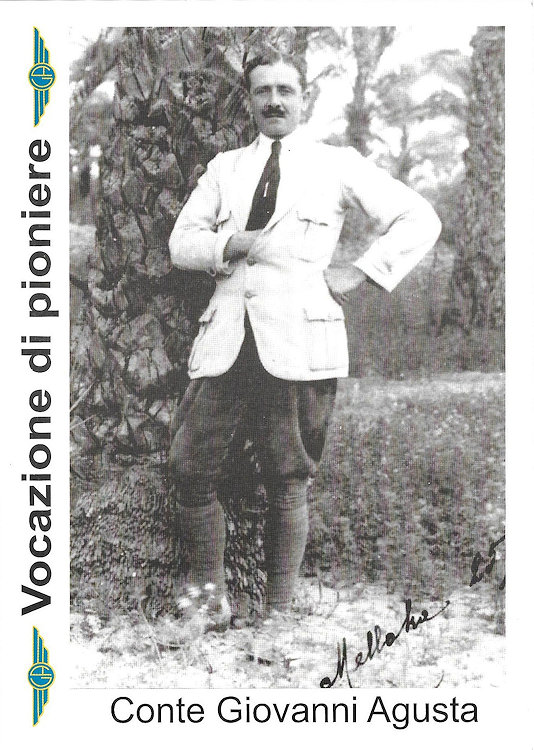
For us only the image on 1 card is important: the one where Giacomo Agostini gets the first MV 750 Sport presented.
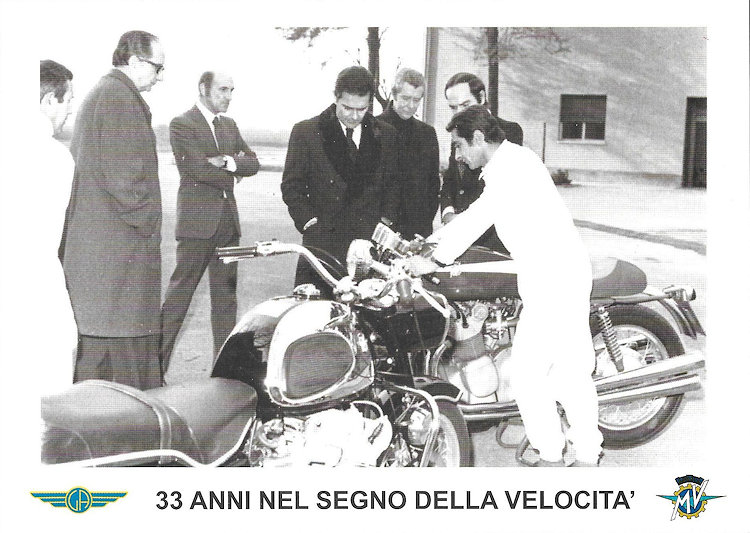
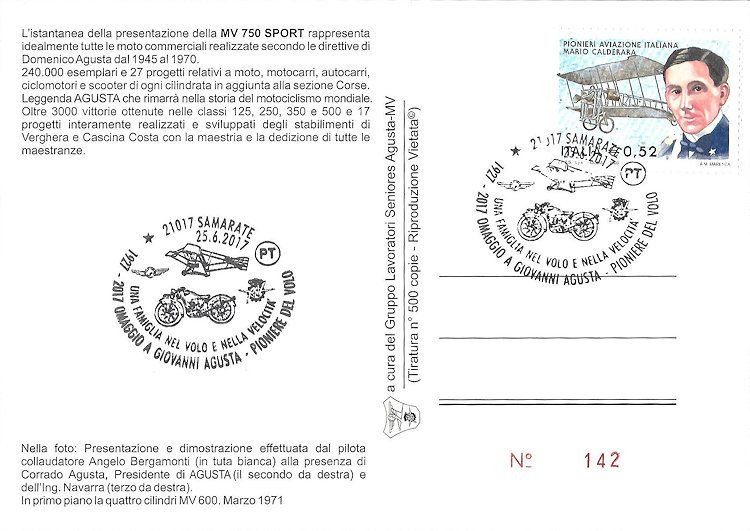
The special postmark could only be obtained on July 25th 2017 in the Agusta museum in Samarate. In the postmark an early plane and off course the Vespa 98.
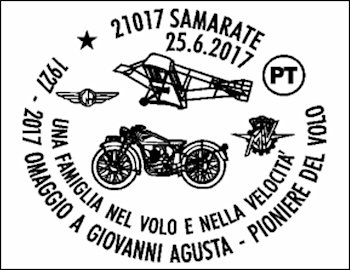
In the new discoveries we mention this time the Sierra Leone Tour de France issue from 2015. This is again an issue that is easily overlooked (and thus also by us). On the stamp in the upper right corner a group of nuns that cheer up Cristopher Froome. On the background an accompanying car and a BMW camera motorcycle.
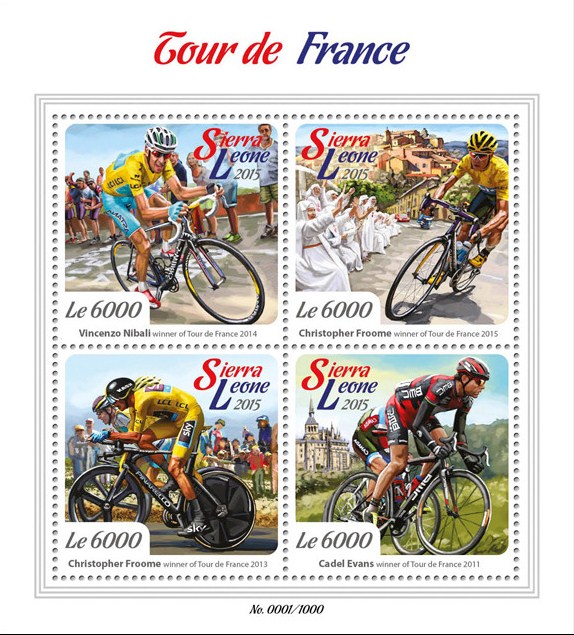
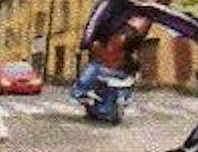
Detail with the motorcycle
But for this stamp Stamperija has used its fantasy. The picture of the nuns that has been used has been made during the 5th stage of the Tour de France in 2013, and the sisters are from the Monastere de la Consolation in Draguignan. This day the ride was from Cagnes-sur-mer to Marseille (228.5 km).
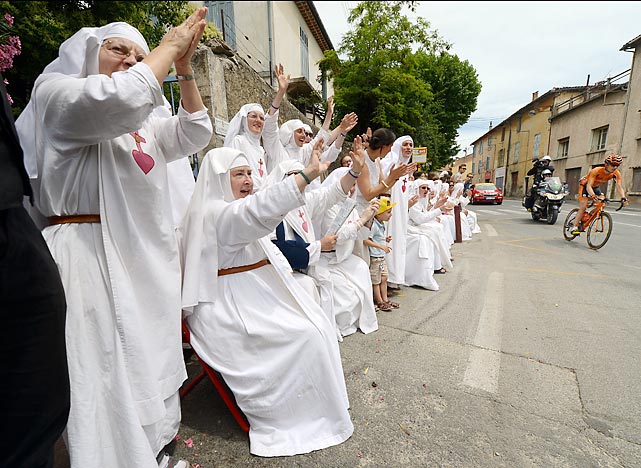
The original picture of the nuns
Two mistakes on the stamp, apart from the fact that is was 2013. That day it wasn't Froome who rode in the yellow sweater (he was 7th in the general classification) but Simon Gerrans, and coming from the direction where the motorcycle rides a bend to the left was made, while Froome is coming from the other side and thus leaves the track. Well, let's assume this is "poetic licence".
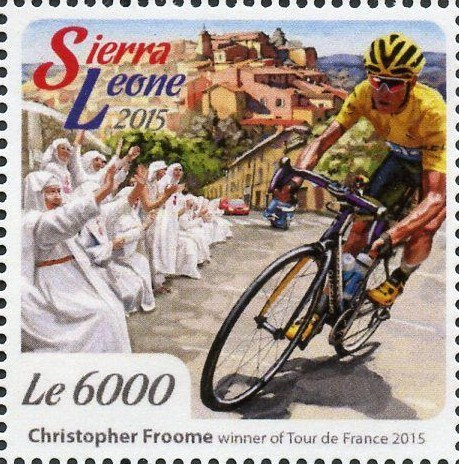
Angel Nieto, who was still honoured by the post in 2015, unfortunately has passed away on August 3rd 2017 at the age of 70 by a traffic accident. In the 70-ies and 80-ies Nieto was seen as the arbiter of taste in the light motorcycle classes (50cc, 80cc and 125cc), with 90 GP-wins and 13 World Championships. Superstitious as he was he did not use the number of 13, but always spoke about "12 + 1" world championship titles.
In 2015 he still posed on the
Classic-Car-Madrid fair for this maximum card with "his" stamps.

The original picture
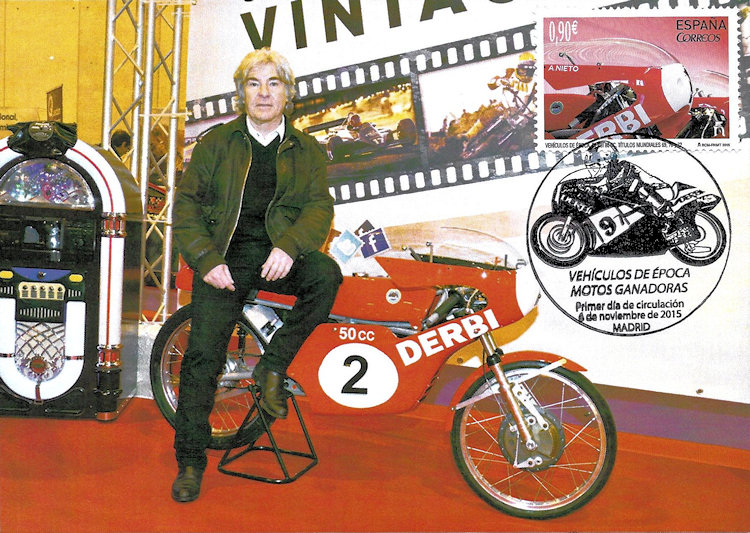
The maximum card that has been made from the picture
Hans de Kloet
Top - Back to former page - Home |